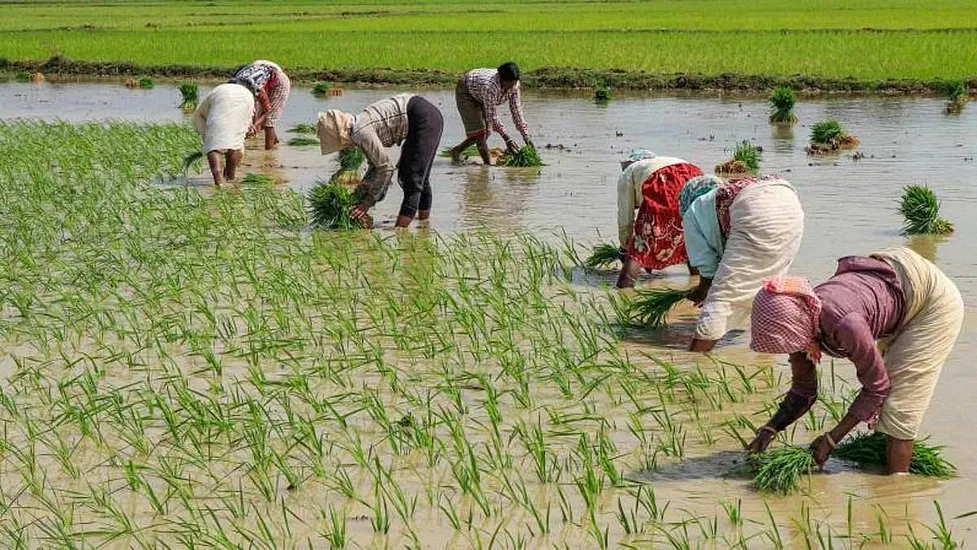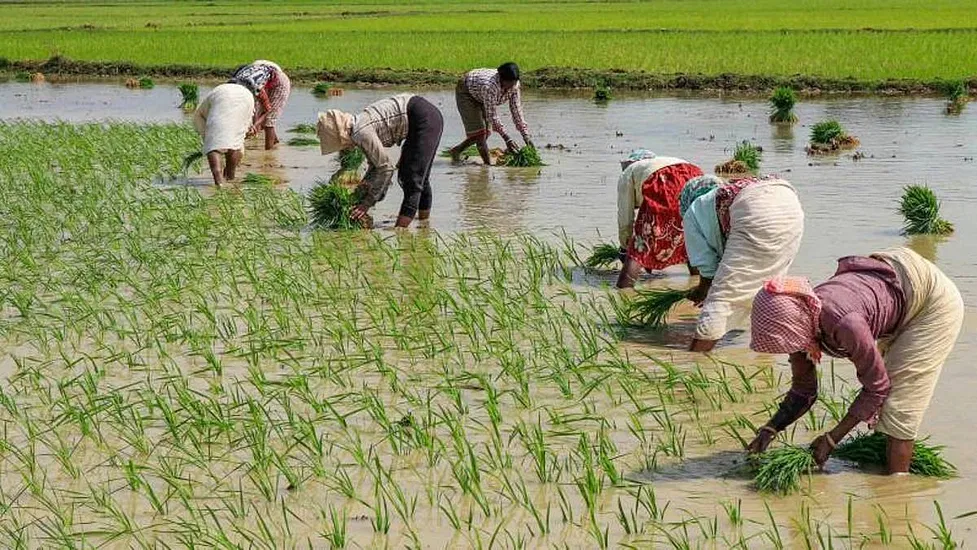Description

Copyright infringement not intended
Context: Several farmers across the country have observed "foot rot" disease on Basmati rice saplings in nurseries. Paddy seeds are first planted in nurseries, and the saplings are transported to the fields after a month.
Details
- Basmati rice is a highly valued aromatic rice variety that is cultivated in India and other countries. However, it is susceptible to a fungal disease called foot rot, which can cause severe losses in yield and quality.
Foot rot disease
- Foot rot is caused by “Fusarium verticillioides”, a soil and seed-borne pathogen that infect the saplings in the nurseries and later in the fields.
- The symptoms of foot rot include pale yellow and elongated saplings that eventually dry up and die.
- The disease can also appear after transplantation when the infected plants grow taller than normal and then wilt.
- Foot rot can be managed by using disease-free and treated seeds, destroying the infected saplings, and applying fungicides or biocontrol agents.
Epidemiology of foot rot
- Foot rot is a common disease of basmati rice that occurs in different parts of the world, especially in South-East Asia.
- The disease is favoured by high temperature and humidity, poor drainage, and high soil fertility.
- The pathogen can survive in the soil or on the seed surface for long periods and can be spread by irrigation water, farm tools, or contaminated seeds.
- The infection usually occurs at the seedling stage in the nurseries, where the pathogen enters through the roots or wounds and colonizes the stem base.
- The disease can also occur after transplantation when the pathogen infects the lower nodes and sheaths of the plants.

Diagnosis of foot rot
- Foot rot can be diagnosed by observing the symptoms of the saplings or plants.
- The infected saplings show pale yellow and elongated leaves that curl inward.
- The stem base becomes soft and rotten, and pinkish fungal growth may be seen on the lower sheaths.
- The saplings may break easily or die before transplantation.
- The infected plants after transplantation show stunted growth and wilting. The lower nodes and sheaths develop adventitious roots and pinkish fungal growth. The plants may fall over or die prematurely.
- A laboratory test can confirm the presence of Fusarium verticillioides by isolating the fungus from the infected tissue or seed and observing its morphology and molecular characteristics.
Management of foot rot
- Foot rot can be managed by adopting an integrated approach that involves cultural, mechanical, biological, and chemical methods.
- Use disease-free and treated seeds from certified sources. Treat the seeds with fungicides such as carbendazim + mancozeb or biocontrol agents such as Trichoderma harzianum before sowing.
- Sow the seeds in well-drained and fertile soil at the optimum time (first fortnight of June) and density (25-30 kg/ha) for basmati rice.
- Destroy the infected saplings in the nurseries and do not transplant them to the fields.
- Apply fungicides such as propiconazole or biocontrol agents such as T. harzianum to the saplings before transplantation.
- Maintain proper irrigation and drainage in the fields to avoid waterlogging and stress.
- Remove and burn the infected plants in the fields to prevent further spread of the disease.
- Rotate rice with non-host crops such as wheat or mustard to reduce the inoculum load in the soil.
Summary
- Foot rot is a serious disease of basmati rice that can cause significant losses in yield and quality. The disease is caused by Fusarium verticillioides, a soil and seed-borne fungus that infects the saplings in the nurseries and later in the fields.
- The symptoms of foot rot include pale yellow and elongated saplings that dry up and die, or stunted and wilted plants that fall over or die prematurely.
- Foot rot can be managed by using disease-free and treated seeds, destroying the infected saplings, applying fungicides or biocontrol agents, maintaining proper irrigation and drainage, removing and burning the infected plants, and rotating rice with non-host crops.
Must Read Articles:
Basmati Rice: https://www.iasgyan.in/daily-current-affairs/basmati-rice-5
|
PRACTICE QUESTION
Q. Recently the term “Fusarium verticillioides” was frequently seen in the news. It is related with;
A) A new Artificial Intelligence system
B) A malware tool used for cyber war
C) A disease-causing fungus in basmati rice
D) A disease-causing bacteria in tea plants
Answer: C
|

https://indianexpress.com/article/cities/chandigarh/farmers-report-foot-rot-disease-in-basmati-experts-say-junk-saplings-grow-fresh-batch-8643676/














